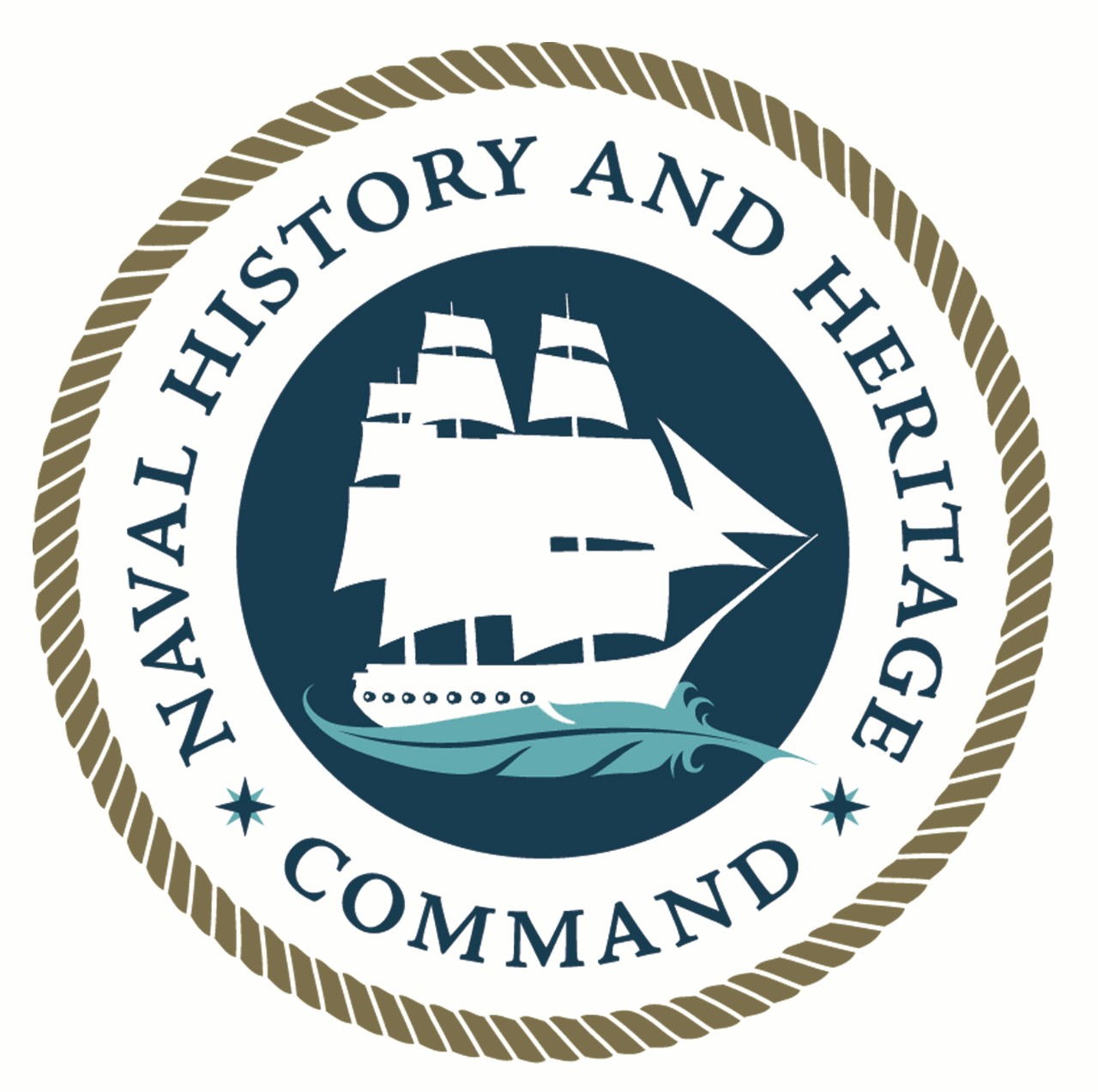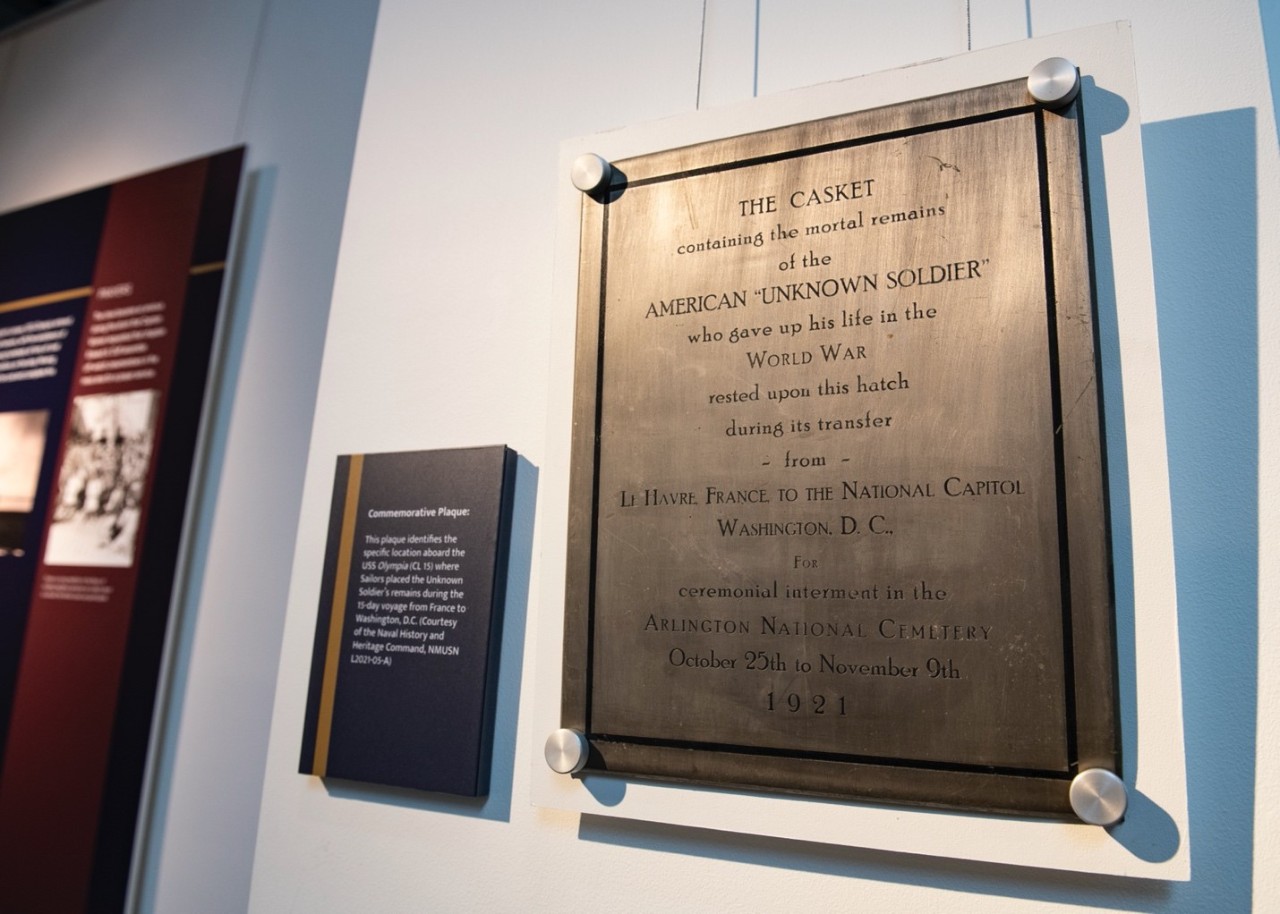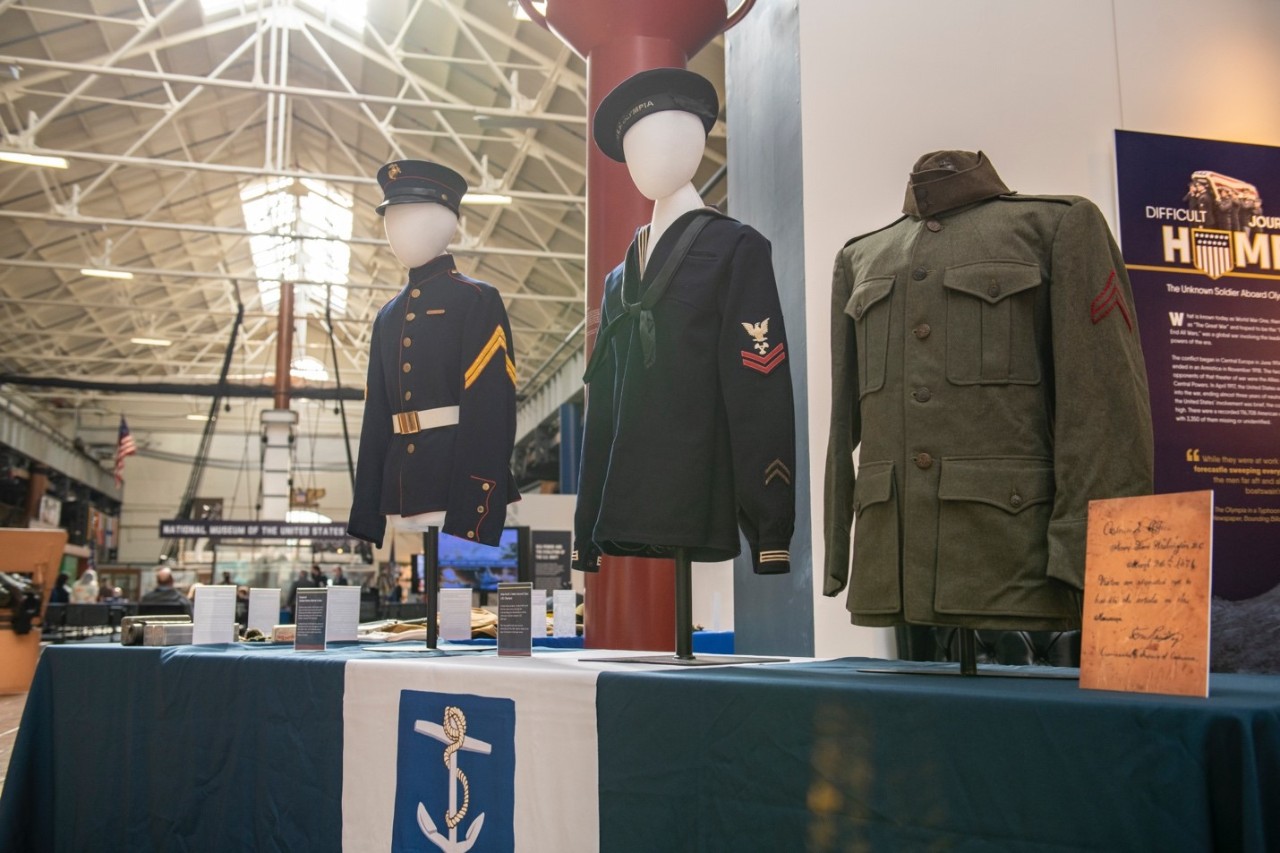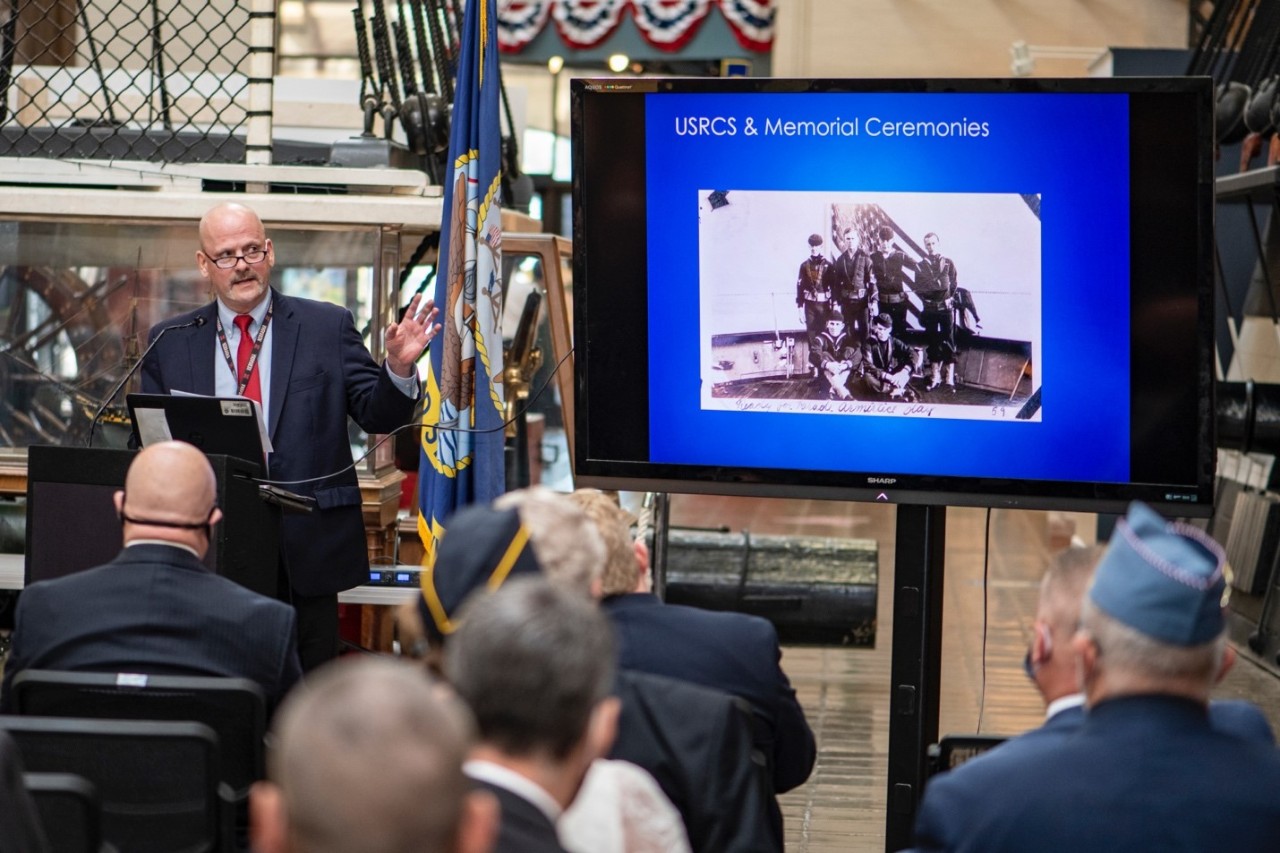
Story by Mass Communication Specialist 2nd Class Jalen D. Walton, Naval History and Heritage Command
Naval History and Heritage Command (NHHC) hosted a special symposium at the National Museum of the U.S. Navy (NMUSN) Nov. 9, as part of the 100th anniversary commemoration of the return of the Unknown Soldier to U.S. soil.
On Nov. 9, 1921, the remains of an anonymous serviceman were returned home to the United States after WWI, becoming the first of three unidentified service members to rest in the Tomb of the Unknown Soldier.
While many may be familiar with the Tomb of the Unknown Soldier, some may not know the important role the U.S. Navy played in the story or how USS Olympia carried the remains of the Unknown Soldier, journeying from France across the Atlantic Ocean to return the Unknown Soldier to U.S. soil.
At the symposium, attendees listened to several panel presentations about the Navy’s role in the return of the Unknown Soldier, including the difficult journey USS Olympia encountered on the seas during its return.
“Exactly 100 years ago today, USS Olympia, her crew and a small Marine detachment completed a challenging voyage to return the Unknown Soldier home,” said NHHC Director Samuel J. Cox, a retired U.S. Navy rear admiral, during the symposium. “Today, we recognize and commemorate the bravery of all Sailors, Marines and Soldiers involved in returning one of our own.”
Guests had an opportunity to ask panelists questions and observe an NMUSN exhibit dedicated to efforts that brought the remains of the Unknown Soldier to the Washington Navy Yard.
“It has been one of the highlights of my time at the Naval History and Heritage Command, to be one of the main planners for the symposium commemorating the 100th anniversary for the Tomb of the Unknown Soldier,” said Tom Frezza, an outreach project officer in NHHC’s Communication and Outreach division. “Bringing together speakers, exhibits, and digital content to convey the Navy’s role in such a serious mission has been eye-opening. I thought I knew the full story, but planning this has exposed me to so much more.”
Among some of the items in the exhibit is a commemorative plaque which identifies where the casket containing the remains was placed aboard Olympia during the voyage from Le Havre, France to Washington, D.C.
“Today’s event went really well,” said Wesley Schwenk, a registrar at NMUSN. “We really paid homage to the Unknown Soldier. It was amazing to get all of these historians together in one place to relay the history and reflect so others may better understand why today is important.“
The Unknown Soldier of World War I represents members from every branch of service who made the ultimate sacrifice, and is a powerful symbol—for remembrance, for solidarity, for understanding, and for reflection.
NHHC, located at the Washington Navy Yard, is responsible for the preservation, analysis and dissemination of U.S. naval history and heritage. It provides the knowledge foundation for the Navy by maintaining historically relevant resources and products that reflect the Navy's unique and enduring contributions through our nation's history, and supports the fleet by assisting with and delivering professional research, analysis and interpretive services. NHHC is composed of many activities including the Navy Department Library, the Navy Operational Archives, the Navy art and artifact collections, underwater archeology, Navy histories, 10 museums, USS Constitution repair facility and the historic ship Nautilus.
To learn more about the return of the Unknown Soldier, click here.





